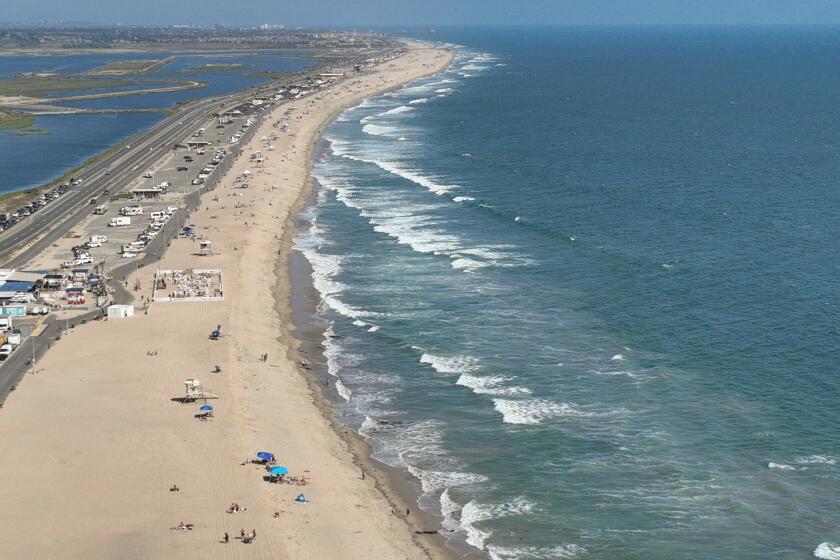- Share via
Five hundred feet outside the Lahaina burn zone, the tourists receive their leis.
As the torches of the Old Lahaina Luau flicker, bartenders mix mai tais and hula dancers get ready. After dinner, dancer and emcee Niki Rickard gathers the performers in a circle and asks the audience for “a moment of silence ... to acknowledge all we have lost.”
A year after the deadliest U.S. wildfire in a century, which killed at least 102 people and leveled 2,200 structures, this is what passes for business as usual in West Maui. Though 98% of the island carries no visible signs of the fire, most of the city of Lahaina was leveled and remains behind roadblocks as crews begin the transition from cleanup to reconstruction.
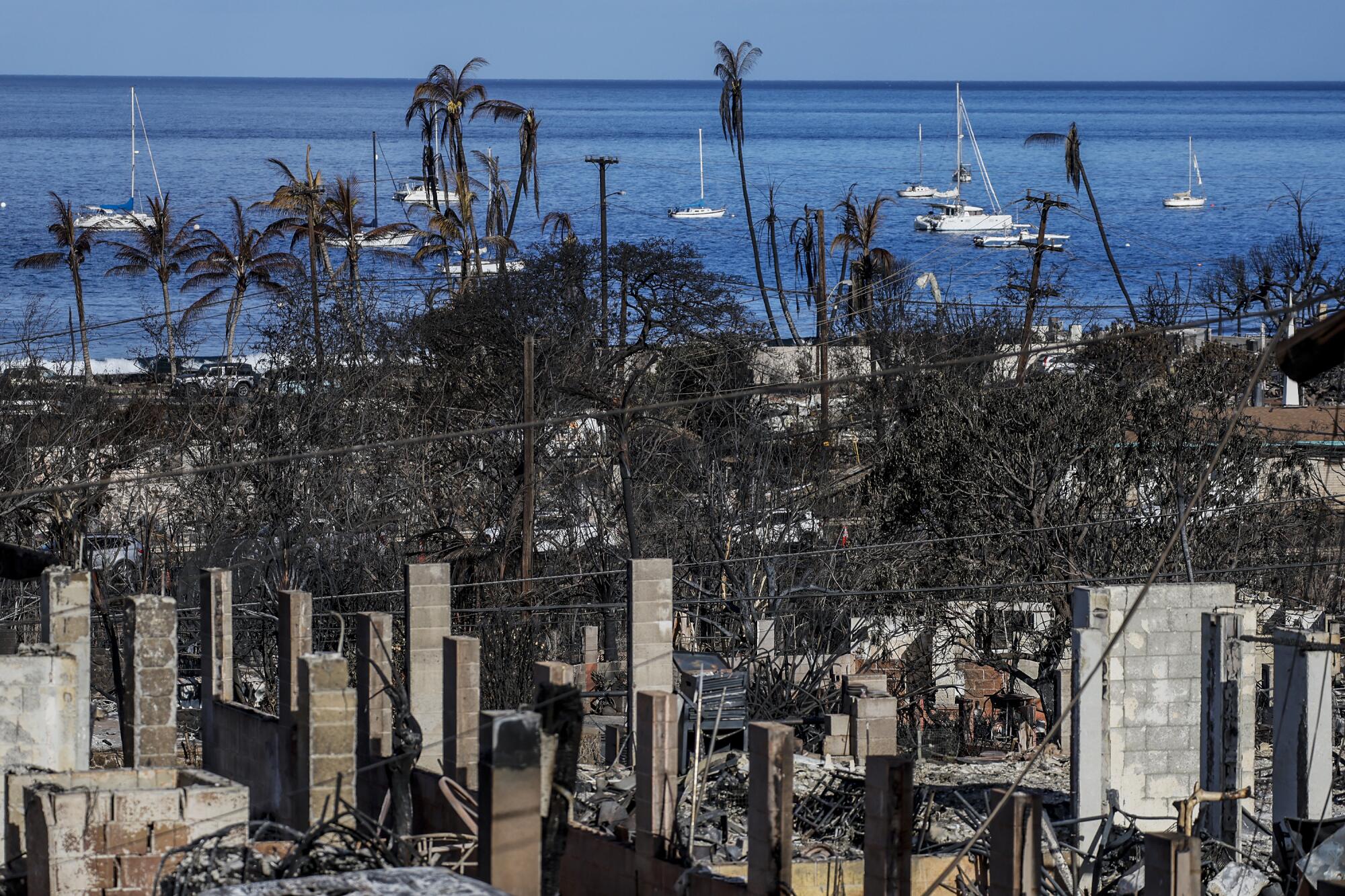
In the first two weeks after the fire, most of the city’s 12,700 residents moved into hotels, with FEMA footing many bills. Since then, amid ferocious debate about the island housing shortage and how to rebuild, most fire survivors have moved to longer-term housing or left the island. Many are back at work now, tending to tourists.
This tangle of mourning, recovery and tourism has many travelers wondering if it’s possible or respectful to spend a vacation on Maui now.
The answer is yes, according to every resident, worker and visitor I asked in three days on the island. But tourism lags about 25% behind pre-fire levels, and the situation can seem as layered as a Maui onion. While the average hotel room rents for more than $500 per night, residents scramble for housing and equilibrium.
Essential things to do, see and eat right now in California, Oregon, Washington, the Baja Peninsula and British Columbia. Ready to explore?
It’s easy to spend a week on the island in full vacation mode without setting foot in Lahaina. Conversely, the island’s recovery campaign includes a variety of “voluntourism” options (detailed below) for those who want to dedicate half a day or more to pitching in.
But some curious visitors fall between those extremes. Tourism workers say this can lead to hard feelings, especially when visitors try to photograph damage or ask intrusively about lost homes and loved ones. That’s when many Mauians turn away, get angry or post signs at the end of their block reading, “Locals still grieving. Show Respect. No tourists.”
“Be sensitive,” said Siobhan Wilson, co-owner of the Maui Butterfly Farm in Olowalu. “Don’t go up and ask people, ‘What did you see and what happened?’ If people want to talk, they will.”
“Come with aloha. Leave with aloha,” said longtime resident George Pali, sitting at a Wahikuli Wayside Park picnic table near some long-term tents. “You guys [in California] have wildfires all the time, right? So you have some idea.”
Here’s an update for anyone considering travel to Maui, including reasons why you might or might not want to include a stop in Lahaina.
What’s open in Lahaina, and what’s gone
Most of Front Street, Lahaina’s commercial backbone, is no more. Little remains to remind a visitor that this was the capital of the Hawaiian Kingdom in the early 19th century under King Kamehameha II. But the flames didn’t claim everything.
At the north end of the street, a handful of restaurants and a dive shop were left largely intact, including the Old Lahaina Luau, despite its thatched roofs. It reopened in March and attracts up to 350 guests nightly, many of them happy to be adding dollars to the diminished local economy.
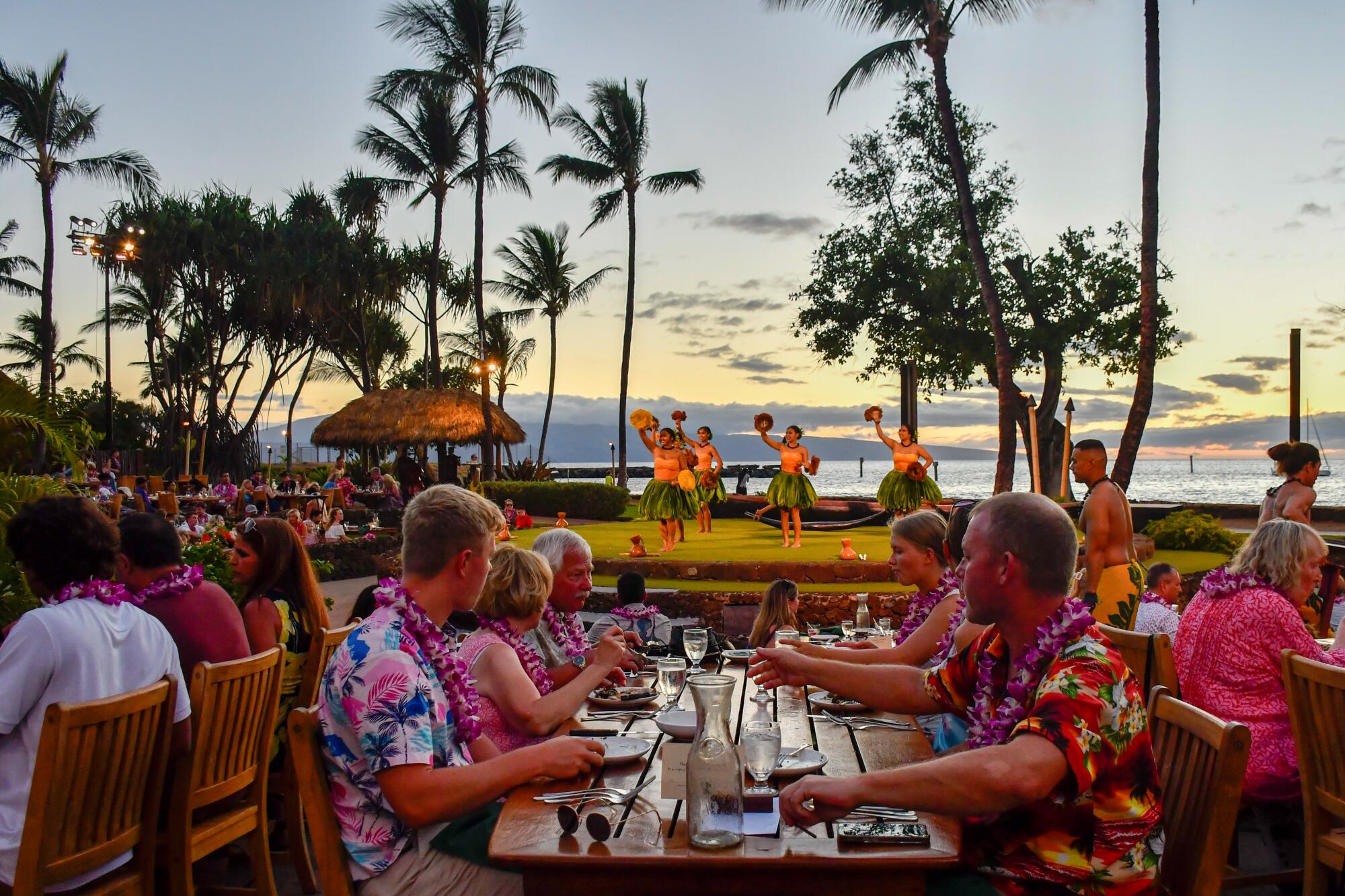
When Niki Rickard takes the microphone before those luau audiences, she doesn’t mention her own story. But it’s a potent one, and it hints at the experiences of many survivors.
Both of her parents are longtime employees of the luau, which started in 1986. Beginning about age 4, Rickard dreamed of dancing there, then landed a job doing just that. Now 30, she also handles sales and emcee duties, summarizing the island’s history of migration, colonization, whaling, plantations and resilience in diplomatically measured tones.
Last August, she had just returned from maternity leave when the fire broke out.
Neither Rickard, her husband or their daughter was injured, but their home burned.
“My daughter was 3 months old,” Rickard said in an interview.
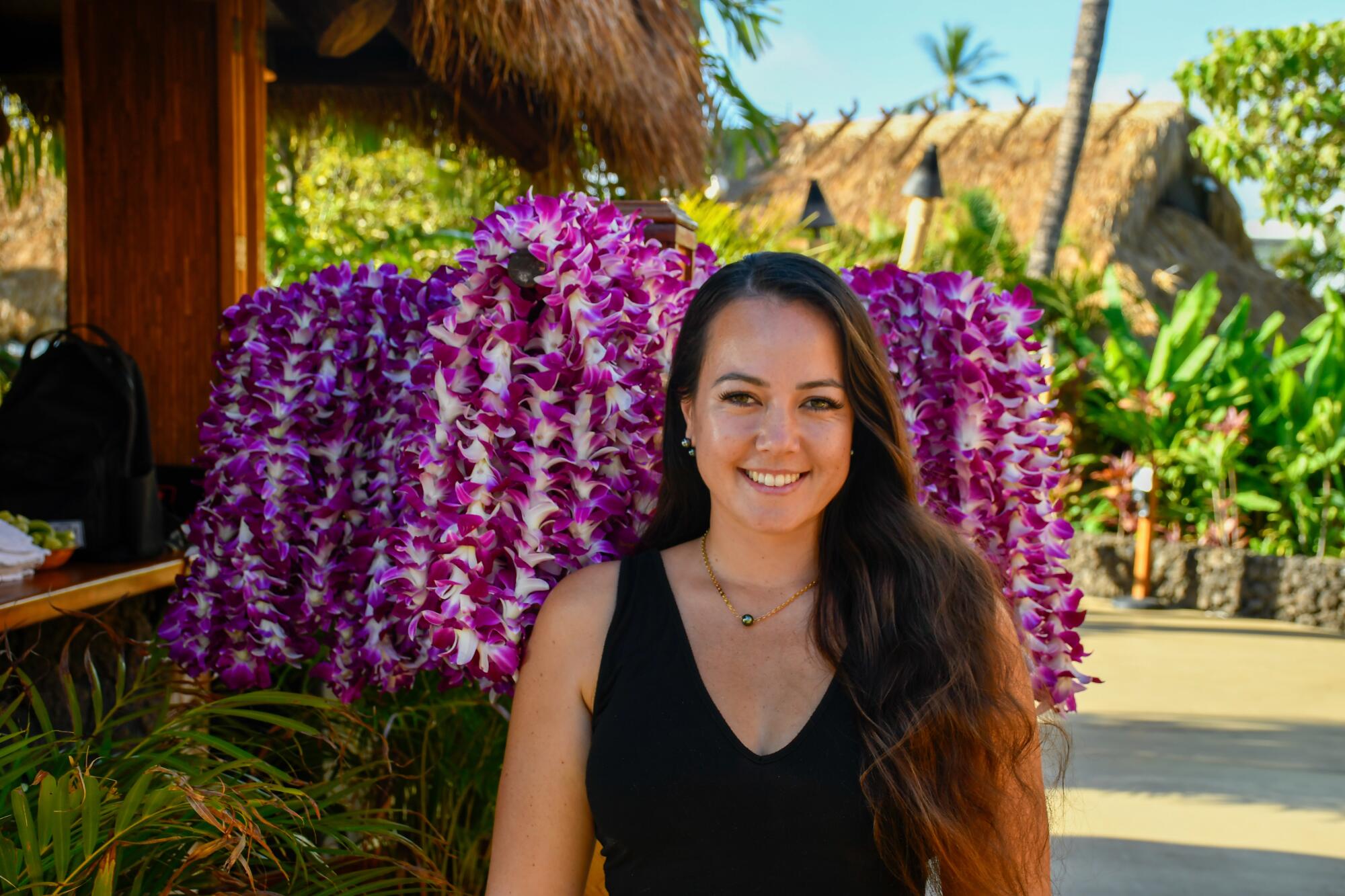
Since the fire, Rickard has been among the thousands of residents dealing with temporary housing, an island-wide child-care shortage and plenty of government and insurance red tape.
“A lot of people in the community are not so happy with the government,” she said carefully.
The luau’s director of public and cultural relations, Kawika Freitas, also acknowledged “a lot of negative feelings” from those who believe the island reopened to tourism too soon. But people need work, Freitas said, and the luau employs about 160 people.
On the same block, the Mala Ocean Tavern reopened in February. Aloha Mixed Plate and Star Noodle (siblings of the luau under the same owner) reopened in March and Aug. 1, respectively. Honu Oceanside is to follow in late summer or fall.
Many more reopenings are expected in the coming weeks and months, giving visitors more reasons to stop and perhaps spend. Meanwhile, because of Maui’s layout, many others will be driving through on their way north.
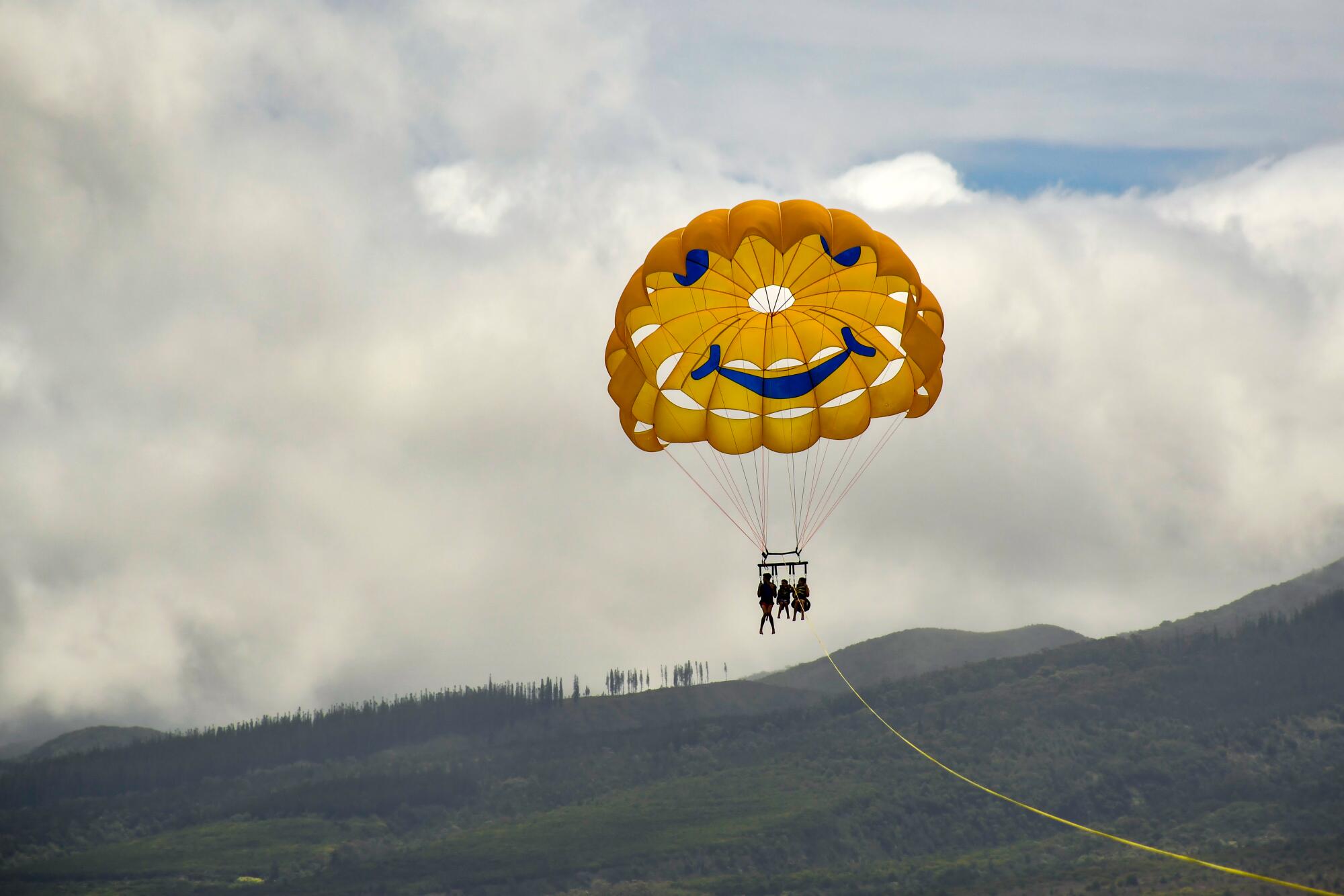
The drive along Lahaina Bypass highway
The August fire, which began near downed utility poles amid drought conditions and gusting winds, blackened 6,721 acres in Lahaina and the up-country area near Kula. It didn’t reach Maui’s east coast (which includes the famed road to Hana) or the southwest coast (which includes the city of Kihei and the Wailea resort area) or the northern coast (which includes Kahului airport).
Nor did flames get to the west coast hotels and condos that begin with Ka’anapali, just a mile north of Lahaina.
But to reach those resorts, visitors do drive the Lahaina Bypass highway. Just before the highway passes over Lahainaluna Road, those visitors see a sobering roadside shrine on their right — scores of crosses and photos, strewn with leis. (Having been warned that many residents see the memorial as a place for victims’ families and survivors only, I didn’t approach on foot.)
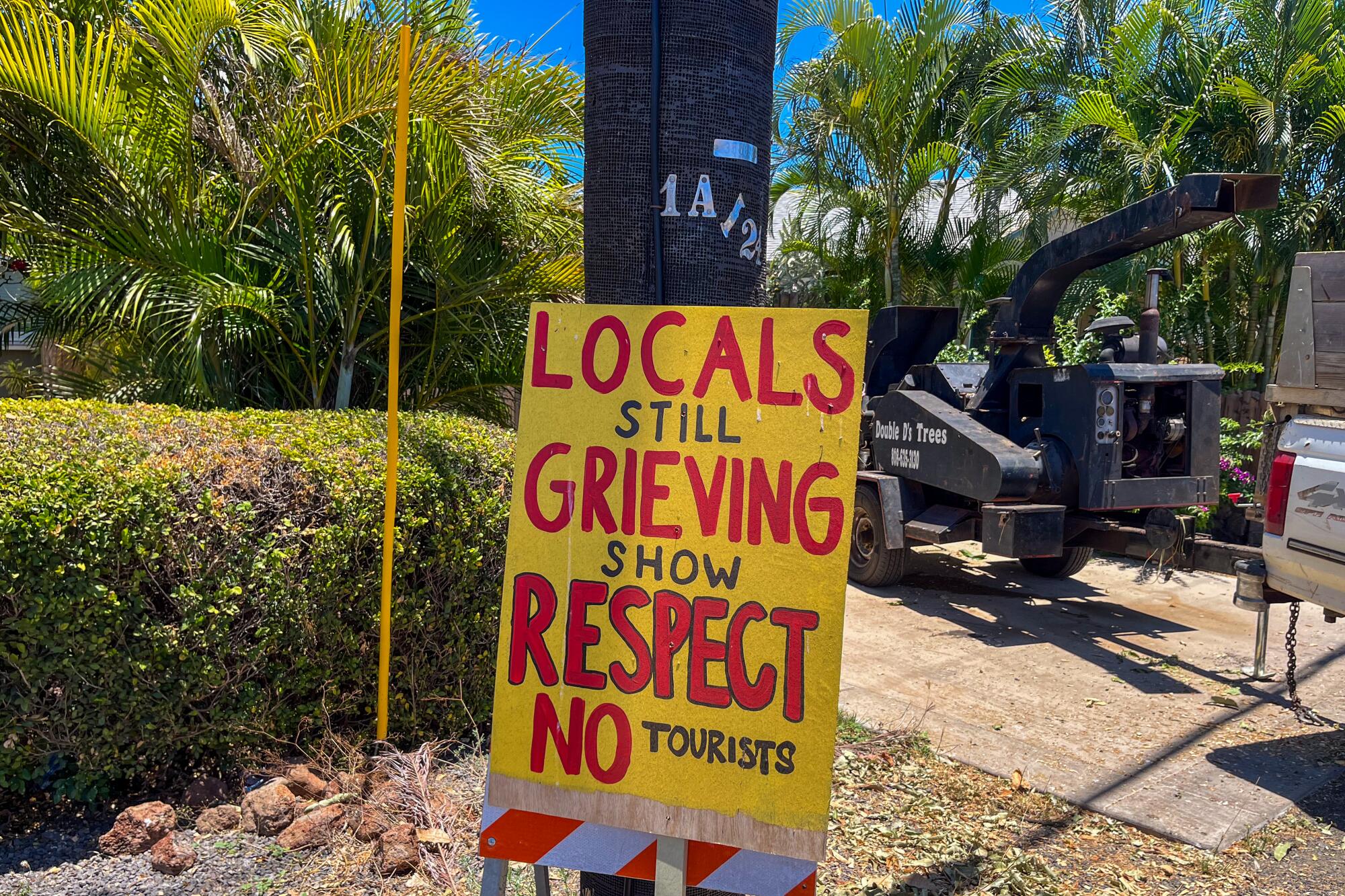

In the next mile, as drivers transition from the highway to Keawe Street and Honapiilani Highway, several signs thank first responders, exhort the community to be strong and call for tourists to show respect. Only a few charred ruins are visible from the road. Six-foot-high roadside screens shield many properties from view.
Visitors won’t see Waiola Church, Lahaina Hongwanji Mission, the historic Baldwin Home or popular restaurants like Kimo’s, Fleetwood’s on Front Street or Cheeseburger in Paradise, all burned. The city’s iconic banyan tree, damaged but recuperating, remains off-limits.
We visited more than 200 miles of coastline, picking through hundreds of beaches to name the 50 best from San Diego to Santa Barbara. We prioritized ease of use and special amenities — like volleyball courts, camping, surf conditions and views.
FEMA reports that by July 31, cleanup crews had cleared 319,000 tons of fire debris, nearly 34 tons of asbestos and 3,000 fire-damaged cars, with 47 rebuilding permits issued by Maui County.
On Saturday, utility company Hawaiian Electric, the state of Hawaii and five other defendants announced a $4-billion settlement agreement with fire victims, pending court approval. Total damages have been estimated at $5.5 billion or more.
One Maui resident, asking to be unnamed, told me he’d just finished a six-month job in the burn zone, wearing a Tyvek suit and respirator, waiting for blessings before stepping onto home sites, scraping ash and asbestos, finding class rings, guns, jewels and puddles of melted aluminum.
Yet just north of Lahaina, a visitor reenters the Maui seen on postcards and screensavers.
What West Maui’s resorts look like and what they cost
In the morning, catamarans glide up to the beach, kids line up for surf lessons, and golfers head to the courses at Kapalua. At day’s end, legions gather to watch the sunset as daredevils leap from the Black Rock Beach boulders to the sea.
Though the Royal Lahaina and Outrigger resorts in Ka’anapali housed many fire survivors as recently as early July, state and federal officials say the vast majority have moved on to intermediate or permanent housing.
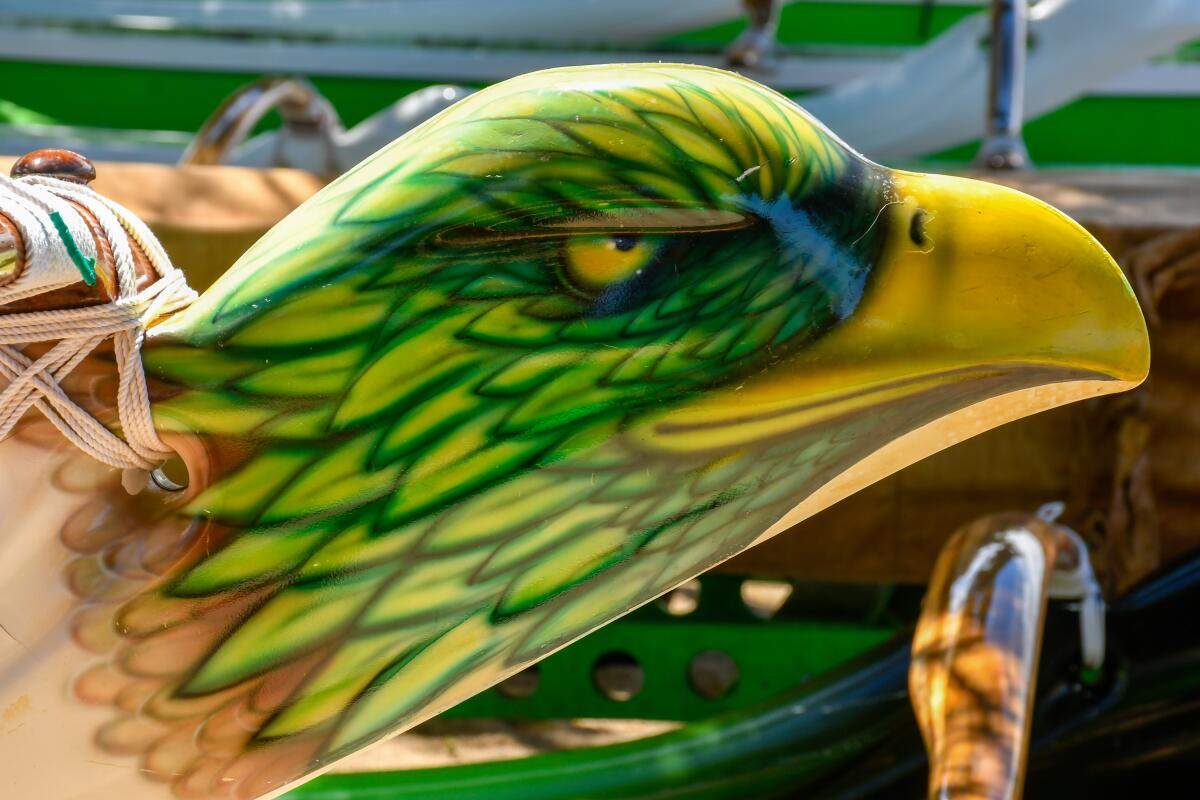
A custom paint job on an outrigger canoe on the Ka’anapali coast. (Christopher Reynolds / Los Angeles Times)

A surfing class in Ka’anapali. (Christopher Reynolds / Los Angeles Times)
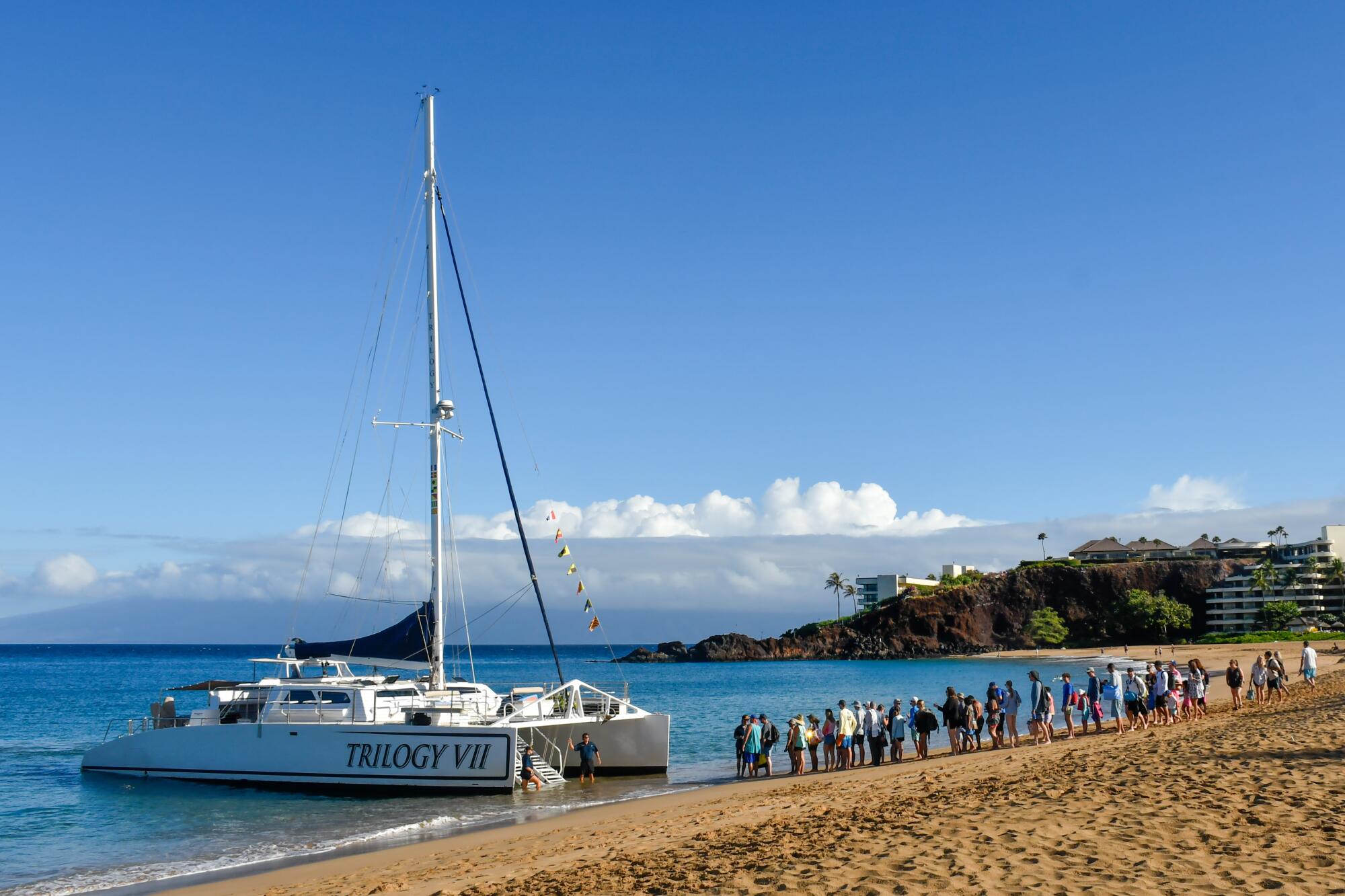
In June, Hawaii’s state tourism statistics show, visitor arrivals to Maui were down 21.8% from the year before, with spending down 27.1%.
The average Maui County hotel rate that month: $554 per night, down 10.5% from the year before, with a third of rooms empty.
The average vacation rental cost less — $401 per night, with a 44% vacancy rate. But that may soon change. Maui Mayor Richard Bissen has proposed converting 7,000 condo units from short-term use to long-term within three years, creating more housing for residents.
“We’ve been coming here for years, and I have never seen the [Ka’anapali] walkway so clear,” said Russ Hill of Santa Clarita, who has a West Maui timeshare.
A moment later, he strapped into a parasailing rig, zoomed 500 feet above Ka’anapali Beach and saw exactly what he wanted to see: island slopes under clear blue skies, a line of hotels along the beach, a few leaping dolphins and no reminders of the fire except the boat captain’s “Maui Strong” T-shirt.
How visitors become volunteers
Napili Noho, an emergency service hub in Napili Park, stands about three miles north of Ka’anapali. It didn’t exist before the fire. Now it often gets 200 guests in a day.
They browse a free store stocked with food, shoes and hygiene items, sit for meals (prepared with help from other charities) or step into the lomi lomi tent, where masseurs and chiropractors give free treatments.
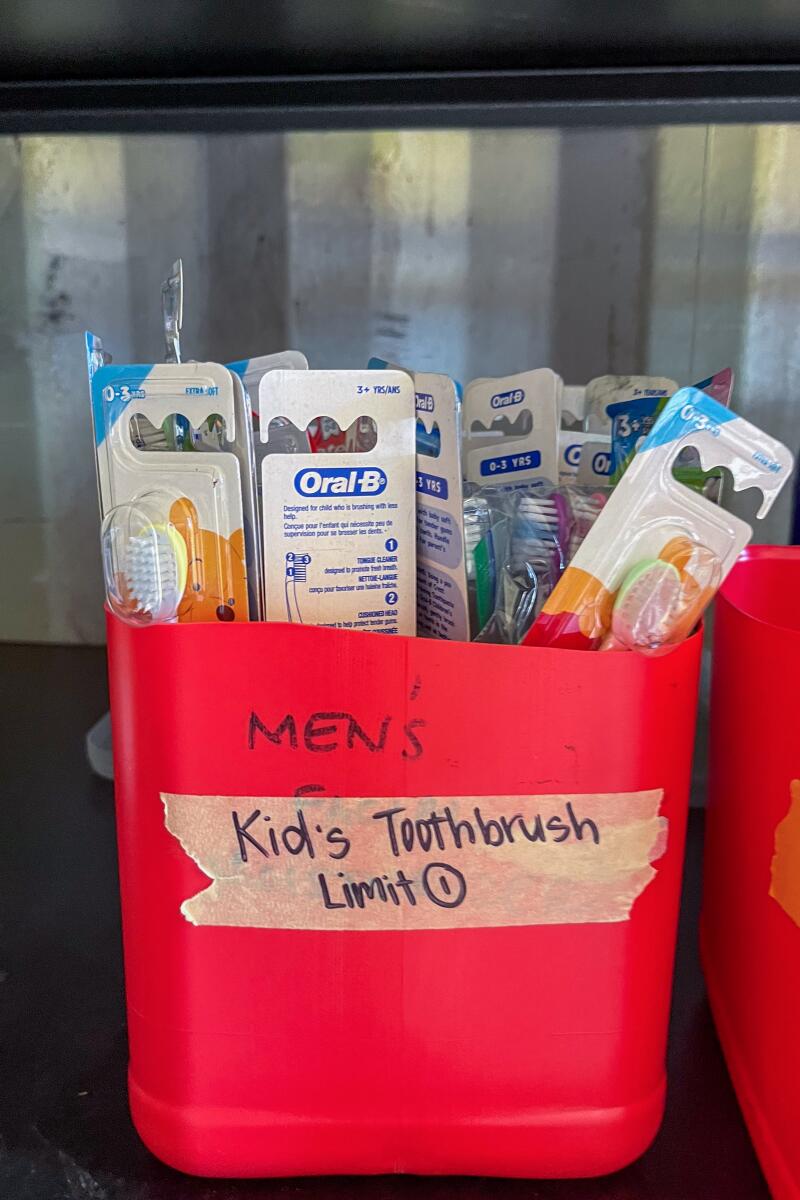
The Napili Noho emergency resource hub, created after last year’s fire, offers food and household items for those in need. (Christopher Reynolds / Los Angeles Times)
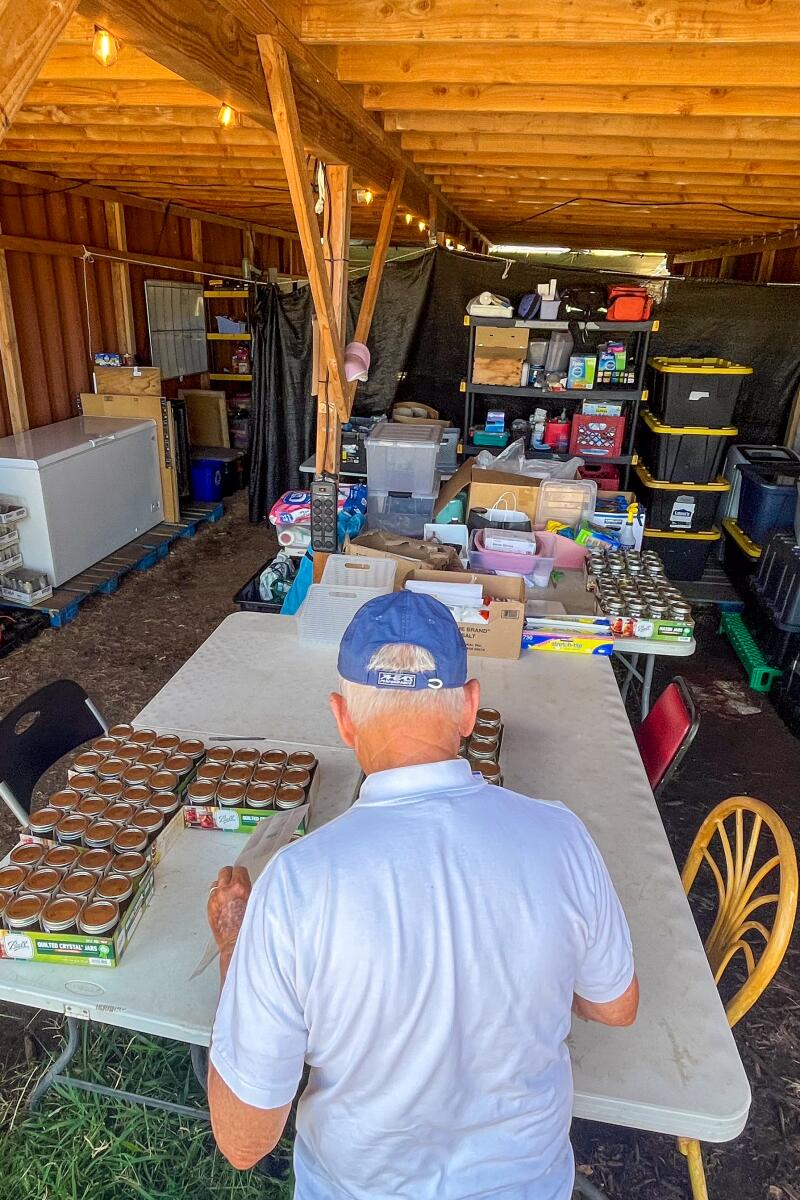
Volunteer Tom Fox, visiting from California, works at Napili Noho. (Christopher Reynolds / Los Angeles Times)
Most days, at least one short-term volunteer visitor shows up, having signed up online. On the Tuesday I arrived it was Tom Fox, 81, a semiretired real estate agent from Pleasanton.
For years, Fox and his wife have been visiting West Maui to play golf and lie low. They were at their Napili condo when the fire struck and wound up inviting their housekeepers to stay in the condo for several weeks.
Now the housekeepers have moved on, Fox said, and he’s found that he’s not as good as his wife is at keeping busy.
“So I found out about this place and came on down,” Fox said. The day before, he’d bought Mason jars for storing cooking oil. Now he was labeling them for community members who might speak English, Hawaiian, Spanish, Chinese, Tagalog, Tongan or Samoan.
Around him, other workers were breaking down bulk packages of salt, soap and other goods, including another volunteer from off-island, a 38-year-old man who goes by the name Savage.
“I was supposed to be here five days,” he told me.
Until last August, Savage said, he was working as a health-focused life coach in Las Vegas. After the Maui disaster, he joined an island-bound group of volunteers from his church.
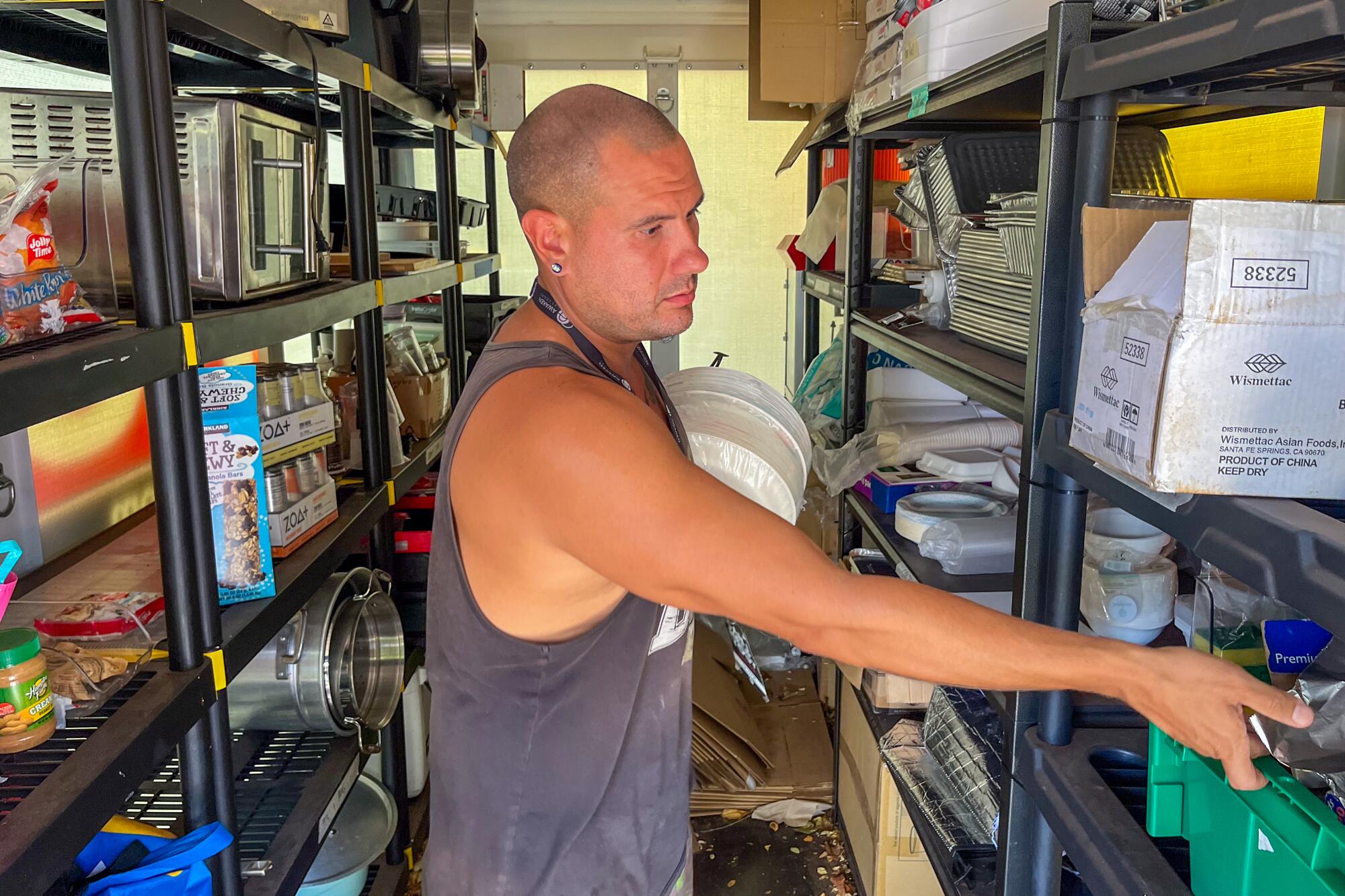
Once he arrived, Savage, who said he has Dakota Sioux heritage and is an Air Force combat veteran, found that “this was very familiar to me.”
Eleven months after arriving, Savage moves from task to task in his flip-flops, walkie-talkie in hand, four days a week, helping displaced residents feed families and cope with makeshift living situations. He’ll be here “until I’m at peace that it’s time to move on.”
The key, Savage said, is offering comfort without giving advice or trying to counsel anyone. That might mean “asking aunties for cooking recipes,” he said. “Just talking story. Our community may not need to shop as much as they need distractions from life. They might not know where they’re going to be next week.”
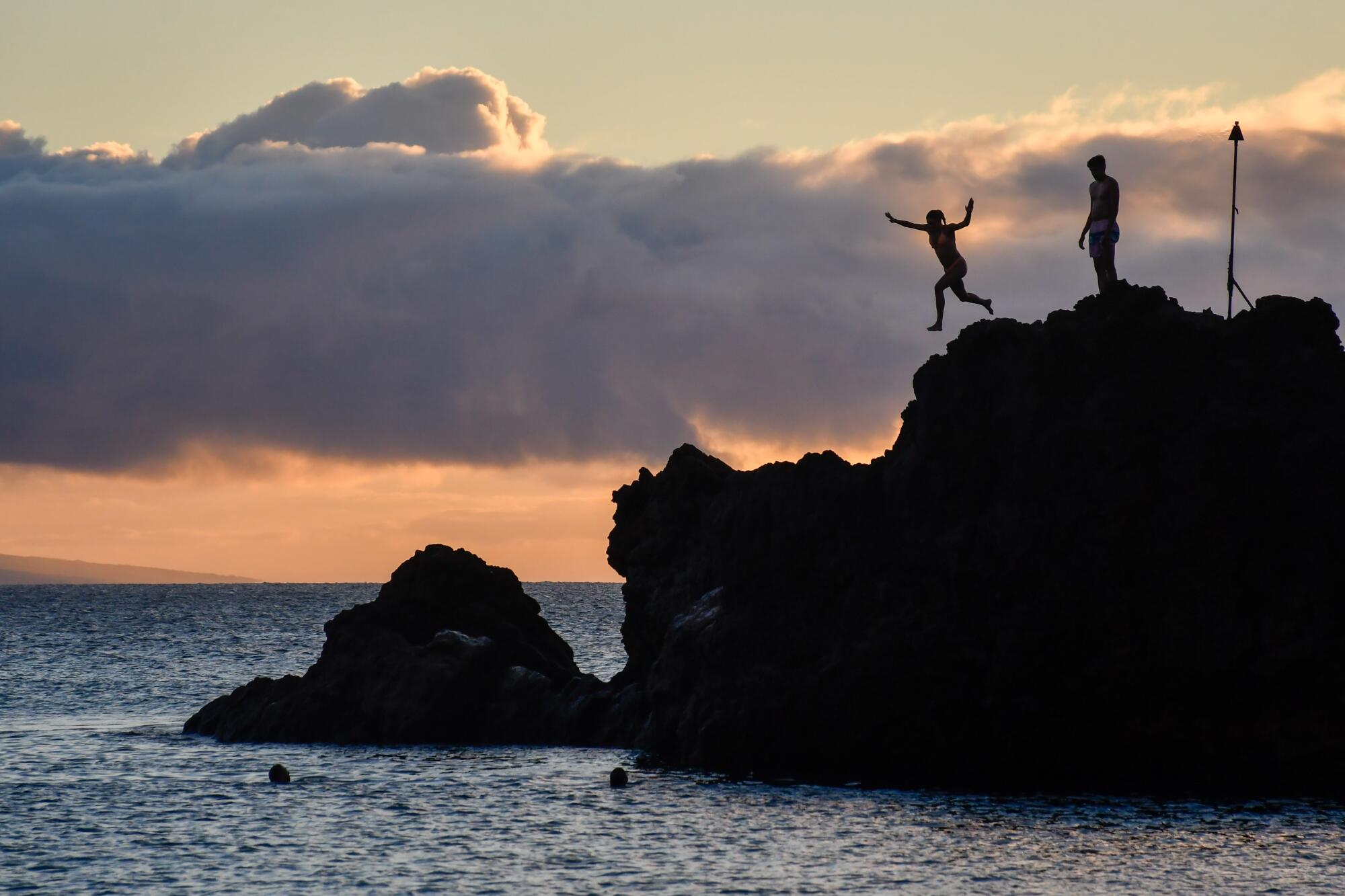
If you go
What to eat
Old Lahaina Luau, 1251 Front St., Lahaina; (808) 667-1998. Lavish dinner al fresco with open bar, followed by an hourlong show with hula, drumming and chanting. Adult admission: $230.37, including gratuity.
Aloha Mixed Plate, 1251 Front St., Lahaina; (808) 661-3322. Patio restaurant (moved down the street since the fire) offering breakfast, lunch and dinner. The Chow Funn noodle bowl (ground pork, bean sprouts, green onions; $15) makes a tasty lunch.
Mala Ocean Tavern,1307 Front St., Lahaina; (808) 667-9394. Brunch and dinner. Perhaps the most elegant restaurant you’ll find with a tin roof and walls. Website includes a link for donations to staff. The signature cocktail is a Makai Tai ($18). Dinner main dishes $28-$61.
Ulu Kitchen, Westin Ka’anapali, 2365 Ka’anapali Pkwy., Lahaina; (808) 868-0081. Breakfast, lunch and dinner on the beach in Ka’anapali. Main dishes $28-$69.
Where to stay
Outrigger Kaanapali Beach Resort, 2525 Ka’anapali Pkwy., Lahaina; (808) 661-0111. A three-star hotel on a coastline of mostly four-star resorts, its location impeccable, with a whale-shaped pool. Rates start at about $370, plus a $35 daily resort fee.
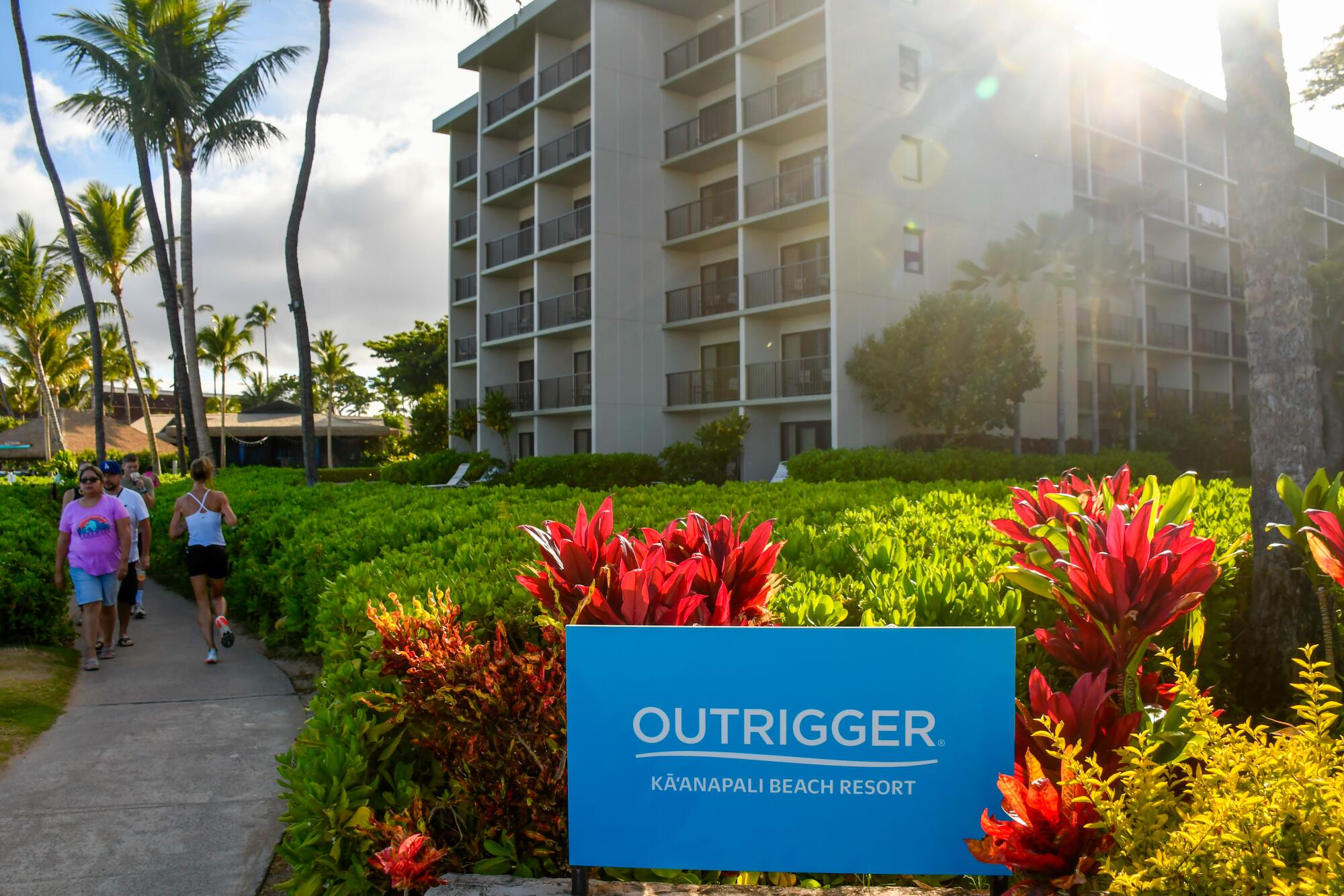
Things to note
In the high country at the south end of Maui, Haleakala National Park’s popular Crater Road and summit area have been closed periodically because of nearby brushfires. Check the park website before planning a visit.
To volunteer on Maui, don’t rely on last-minute suggestions from your hotel’s concierge or activities desk. Make a plan in advance. Mauinuistrong.info includes many volunteering options, as does the website of the Hawaiian Tourism Authority. Malama Kula operates in the up-country area. Napili Noho runs the emergency services hub in Napili Park. Maui Cultural Lands runs programs to protect cultural resources, plant native vegetation and battle invasive species, with volunteer workdays every Saturday in the Honokowai Valley above Ka’anapali. Similar work happens Wednesdays and Thursdays at Kipuka Olowalu, south of Lahaina.
The Lahaina Cannery and Lahaina Gateway malls are open, and more Lahaina businesses are reopening every month. This website tracks reopenings.
More to Read
Sign up for The Wild
We’ll help you find the best places to hike, bike and run, as well as the perfect silent spots for meditation and yoga.
You may occasionally receive promotional content from the Los Angeles Times.

